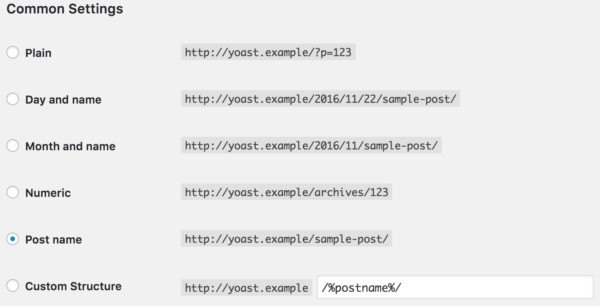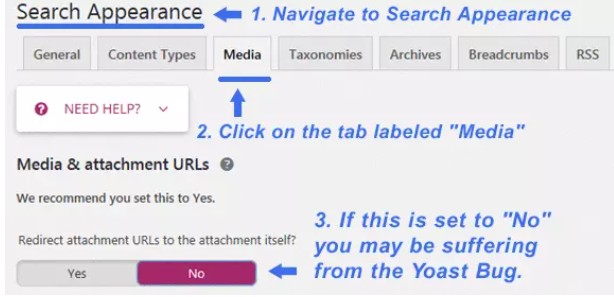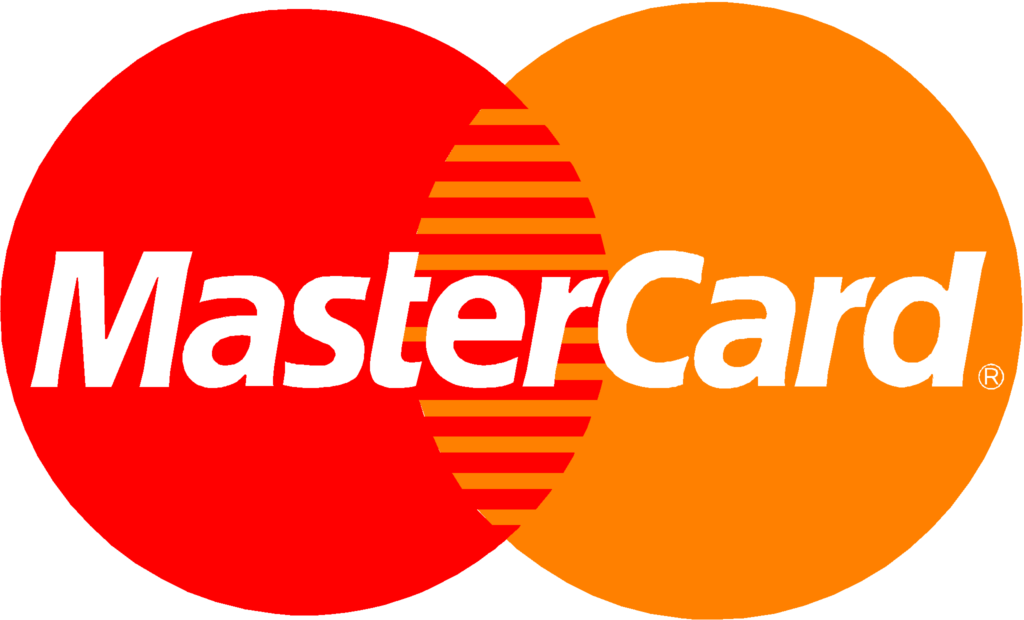Warning: Trying to access array offset on value of type bool in /home/searchcombat/public_html/wp-content/plugins/elementor-pro/modules/dynamic-tags/tags/post-featured-image.php on line 39
SEO is complex and gets more and more complex over the years.
It has long been impossible to get top positions with long keyword lists under your text or your website’s entry in 100 web catalogs.
There is more to search engine optimization!
You should implement these 29 SEO tips to improve your Google ranking in 2021 (and beyond).
1. Use FAQ Rich Snippets
It is arguably the SEO hack for 2019 and 2020:
The FAQPage markup is used to display question-and-answer toggles in search results:

The display of these toggles makes your search result bigger and more noticeable.
And not just a little bit, but clearly!
For comparison:
A normal snippet is 95 pixels high in the desktop search.
A rich snippet of site links is 116 pixels high in desktop search.
A rich snippet with 4 FAQ toggles is a whopping 253 pixels high.
This makes it 218% higher than a rich snippet with a site link and 272% higher than a normal snippet.
In short:
If you rank with a FAQ Rich Snippet, you push the other search results two to three places down.
And this is also clearly shown in the CTR (click-through rate).
Before viewing the FAQ Rich Snippet, my compilation of the best WordPress plugins had an average CTR of 2.7%.
After that, at an average of 4.8%!
2. Write for search engine users
I can no longer hear sentences like these:
“I don’t do SEO because I write for people, not Google.”
“SEO is keyword stuffing. I can’t do that to my readers.”
Sorry, but that’s bullshit.
Writing for Google and people is not a contradiction in terms (if you get it right).
Because Google’s goal is not to have thousands of SEO niche pages in the first place, but rather to show users the best possible content and offers the best possible user experience.
Using the same keyword in every other sentence is not one of them.
In short:
Don’t write for Google. Don’t write for users. Bring the two together and write for search engine users.
This brings us to the next tip, which even many SEO experts ignore.
3. Fulfill the search intention
Have you ever been first or second on Google? And then, after a few days or weeks, did you relegate to position 5-10?
Then chances are you haven’t given search engine users what they were looking for.
You did not fulfill their search intention.
Google measures how many users click on your blog article and then return to the search results (the so-called back-to-SERP rate ). If the percentage becomes too high, your blog article will be downgraded.
So ask yourself for every blog article that you search engine optimization:
- What are the most pressing questions from users who enter a certain keyword on Google?
- What are their goals and wishes?
- What problems or concerns are you looking for a solution to?
- Which aspects of the problem or topic are you most interested in?
Also, take a look at which pages for a keyword are on the first page on Google and let them inspire you because these are the pages that Google sees best in fulfilling the search intention!
The first 10 results not only help you to answer the 4 questions above but also contain a lot of other useful information, such as:
- What kind of page do users expect (e.g., a detailed blog article, an online shop, a price comparison)?
- How long does the content have to be?
- How does the content have to be structured?
- What do users want to see first?
- How do users want to be addressed?
The tool Answer The Public can also help you to find out the search intention for a keyword.
It shows you graphically all the questions that users enter for a specific keyword.
This is how you find out which sub-aspects you need to address in your text.
4. Look at the keywords in Other were also looking at
For some time now, a small box with the heading other searched for under individual search results has been displayed in Google search:

Maybe you’ve already noticed it, maybe you haven’t.
The box only appears if you click on a website and then jump back to the Google search results using the browser’s back button.
But this inconspicuous box has it all:
Because it shows you what users are looking for on Google after visiting a certain website.
That, in turn, allows conclusions to be drawn about the missing information or cannot be found on this website!
A simple and powerful way to reduce your back-to-SERP rate and get ahead of your competition.
5. Write the best article on a topic
Have you ever wondered why some articles are #1, and some aren’t?
The reason for this is often easier than you think:
Because they deserve it and they are really good.
This is not always the case, of course, but often enough. Because good articles are shared more often, linked more often, have a low back-to-SERP rate, etc.
Therefore a simple SEO tip:
Take a look at the articles that are in the top five places. And write an even better one. That goes into even more detail and solves problems faster and more comfortable with entertaining, touching, or exciting.
6. Finally, switch to HTTPS!
HTTPS has been a ranking factor on Google since August 2014. One of the few that are so openly communicated and pushed by Google.
And since then it has become more and more important!
According to the 2017 Ranking Factors Study by Searchmetrics HTTPS has a very high correlation with 0.12 (higher than many other evaluated ranking factors).
And there is another good reason to use an SSL certificate:
An unencrypted website branded by the most popular (desktop) browsers Websites:
In Firefox, For example, forms or login pages without HTTPS are displayed as unsafe.
For Chrome, HTTPS is the new standard. All websites are without HTTPS as unsure displayed.
If you haven’t switched to HTTPs yet, check out my comprehensive guide on switching WordPress to HTTPS in a few simple steps.
7. Use the Google Search Console

With the Search Console, formerly Webmaster Tools, Google itself provides a powerful tool for the SEO analysis of your blog.
And it’s completely free!
For example, with the tool, you can:
- Send a sitemap to Google (which, by the way, you should do!).
- see if there are any problems with indexing your website
- see who linked you
- which keywords your visitors come from via Google
Therefore one of the most important SEO tips for you:
Use the Google Search Console!
Right now.
8. Do keyword research (seriously!)
Backlinks, great content, and a great user experience ensure that you show up in search results.
With keyword research, you determine what for.
You should make use of this power.
So, start by dealing with it. Take the time to learn and apply keyword research to your blog articles.
It is worth it.. Believe me.
A great place to start is with my in-depth keyword research guide. There I will show you step by step how to find good keywords and what makes a good keyword.
But be careful!
There’s no point in overdoing it with the keywords.
9. Fuck keyword density!
It still makes sense to focus on one main or focus keyword when optimizing your blog articles.
You build this in the most important places, such as B. Article title (H1 heading), meta title, meta description, in the running text, and permalink.
But:
Don’t destroy your text or the perfect headline just to squeeze in a keyword somewhere! And don’t include your main keyword in every other sentence only to get a keyword density of one or more percent.
What you should do instead:
Include relevant keywords. Use synonyms. Or tear apart your main keyword and use its parts.
Google is now very good at assigning texts to specific keywords even if they don’t appear 100 times.
10. Use a useful keyword tool
Using a useful keyword tool is essential in search engine optimization.
The quality of the tool is a significant factor in the quality of your keyword research. A good tool doesn’t even have to be expensive.
There are plenty of free tools that will get you a long way:
- -Ubersuggest (cheap keyword tool with nice user interface and competition analysis ).
- -Google Trends (to see interest in a keyword over time).
- -Answer The Public (to find out long-tail keywords and search intent).
- -Google Search Console (to see which keywords you are already ranking for and to find opportunity keywords).
- -Searchmetrics (for a quick look at visibility, but Pro versions are too expensive for what they offer).
You can get even further with paid SEO tools. These not only have a larger and more precise database but also offer even more functions.
For example, you can look at which keywords other websites are ranking for. And with which blog articles or pages exactly:

I recommend the following tools:
- KWFinder (the keyword tool of my choice with additional practical functions in the luggage)
- SEMRush (very good for competitor analysis and general keyword research with the Keyword Magic Tool )
- Ahrefs (the Swiss Army Knife for SEO with a huge database)
You can find more useful keyword tools and detailed descriptions of the tools already mentioned in my article on Keyword Tools That Are Guaranteed to Find Great Keywords.
11. Pay attention to the competition when it comes to keywords (not just search volume)
Found a keyword with a high monthly search volume?
It’s good. But it won’t do you any good if you can’t get to the first page at least for that (even better, the first five places).
Otherwise, you will get as many visitors as a boat rental in winter.
When the lake is frozen over.
It’s at least as necessary to look at how tough the competition is.
Note:
“It is better to come first for a keyword with low search volume than it is to come second for a keyword with high search volume”.
An example from practice:
Let’s say you manage to get to the top of the second page with your blog article about dry yeast for the keyword dry yeast ( with around 4,000 monthly search queries).
Then you might get 40 visitors per month for this keyword if you are lucky.
It is better to optimize for a more specific keyword, such as B. dry yeast instead of fresh yeast.
That only has about 880 monthly. Search queries. But you can get to second or even first place much more quickly.
And that will bring you not 40, but 300-500 visitors per month.
12. The traffic light at Yoast SEO doesn't always have to be green!
What applies to keyword density also applies to the traffic light at Yoast SEO:
Your goal shouldn’t be to have all the lights green.
The traffic light is useful and also helps me with keyword optimization. But some of the recommendations are outdated, inaccurate, or do not take into account the legibility of an article .:
- I recommend a blog article with a length of at least 800 words (please do not stretch your blog article through meaningless content just to get more words!)
- Yoast SEO does not, at least not in the free version, include the different spellings of a keyword (for example, with or without a hyphen), the keyword in inflected form, or synonyms in the analysis.
- The main keyword does not always have to be in all places that Yoast SEO recommends. It’s often better to leave the keyword out of the first paragraph, subheading, or main heading if that looks strange to readers. Use synonyms or tear the keyword apart.
- Putting the keyword at the beginning of the main heading or the meta title makes perfect sense. Practically in many cases, it will destroy your headline.
The Yoast analysis for this article, which is optimized for the keyword SEO tips, does not have all the lights on green for reasons of readability. And it has been in the top 10 for a long time.
13. Use hyphens!
Google has now become an indispensable source of visitors for many companies, blogs, and online magazines.
And since everyone optimizes their articles for keywords, the use of the idiot blank has also increased significantly.
You no longer see “SEO Tips” and “SEO Basics”, just “SEO Tips” and “SEO Basics”.
Please stop!
That looks unprofessional. And it doesn’t offer any benefits for your Google ranking.
14. Update blog articles regularly
The internet is fast-moving,. This is also reflected in the search results on Google:
Timeliness is an important ranking factor for many search queries.
What I notice again and again:
Blog articles that haven’t been updated for a long time will eventually slip a few places, even if they have been in the first place for months or years.
Blog articles that rank highly for keywords with strong competition benefit from regular updates.
My tips on this:
- Update your most important blog articles at least every 3-6 months
- The best way to find out how often your blog articles should be updated is by trial and error (being up to date is not important for all keywords).
- Remove the date from your permalinks, otherwise, the URL will change every time you update a blog article!
- Make your blog article a little bit better with every update!
- Also, change the publication date in WordPress from time to time. This is sometimes picked up by Google and shown in the search results.
15. Check your visibility regularly
Check regularly how the rankings for your target keywords and your general visibility are developing.
This is the only way to determine whether your SEO measures are bearing fruit. And fix any problems quickly.
You can use the Google Search Console or a keyword monitoring tool like the SERPWatcher from the mangools suite.
The Searchmetrics Suite’s visibility index is also ideal for a quick overview of your general visibility .
The Searchmetrics Suite is actually a paid professional tool. In the basic version, however, it can be used free of charge.
Although the functions for SEO analysis are partially limited there, they can still be used very well. Especially if you just want to get a quick overview of your own or someone else’s website. So you can check the visibility of the last 3 months, the 5 top rankings or social signals of a website.
If you create a free account, you can even see the visibility of the last 6 months and the 10 top rankings. You can also use the keyword research tool and display the exact search volume for keywords (which is no longer possible with the Google Keyword Planner).
16. Improve your loading time!
The loading time has been a direct ranking factor since 2010.
Since the beginning of July 2018, it has also been increasingly used for mobile search, which means, websites that load very slowly have disadvantages.
In addition:
It is also an indirect ranking factor.
It has a negative effect on user signals measured by Google. The slower your website loads, the more people will jump back to search results and click on another result.
So:
Make short work of anything that slows your loading time! These include Too many or too large images as well as unnecessarily loaded Javascript or CSS files. In addition, you should definitely use a caching plugin, such as Install Cache Enabler.
You can find a detailed guide on how to improve the loading time of a WordPress blog here: How to Make WordPress Faster in 13 Easy Steps.
17. Use short permalinks!
I keep seeing URLs like this one:
https://www.meinblog.com/2017/10/12/mein-super-toller-blog-post-mit-sehr-langer-ueberschrift-die-fast-die-laenge-des-fliesstextes-erreicht/
Or this one:
https://www.meinblog.com/super-tolle-oberkategorie/noch-tollere-unterkategorie/mein-super-toller-blog-post-mit-sehr-langer-ueberschrift-die-fast-die-laenge-des-fliesstextes-erreicht/
Sorry, but this is not user-friendly!
Instead, try to use the shortest possible permalinks with 2-5 words:
https://www.meinblog.com/dein-hauptkeyword/
This has the following advantages:
- A simple hierarchy shows Google that there is important content on your website.
- Your URLs are easier for users to remember.
- Your URLs are easier for you to remember (I can tell you from my head which permalink I used for each of my blog articles).
17.1 Do you need the date and category in the permalinks?
Consider omitting the date in the permalinks.
If you’re running a classic diary blog or news site, the date makes sense, of course. But, if most of your blog articles are not timed, consider removing the date.
First, it lengthens the URLs of your blog articles unnecessarily, making them harder to remember. Second, the URL changes every time you refresh a blog article.
Third, if they see a date in the URL that is a long time ago, fewer people may click it in search results. Here is an excellent contribution from Yoast.
You should also be careful about including categories in the permalinks. Only do this if you have considered very carefully in advance which categories you want to divide your blog into.
Because every time you change a category, the URL of all articles in this category also changes (which creates unnecessary redirects).
Therefore, the preferred permalink setting in WordPress (to be found under Settings> Permalinks ) is the post name:

17.2 How do I change the permalink structure safely?
Please don’t make the mistake of changing the permalink structure just like that. This can seriously affect your visibility.
It is important to forward all articles properly (via 301 redirects) and to change old links.
I recommend the following procedure:
- Create a backup (just to be on the safe side!).
- Change the new permalink structure in WordPress to post name ( /%postname%/).
- Create a redirect code with the Yoast Permalink Helper and insert it into your .htaccess file.
- Resubmit the sitemap to Google via Google Search Console (actually unnecessary because Google automatically fetches the sitemap anyway).
- Run the Broken Link Checker over it once and replace all redirected internal links (with the old permalink structure) (deactivate the plugin again after use, as it doesn’t exactly save resources and can slow down your blog).
18. Use meaningful filenames and alt tags for images
Make sure to use meaningful file names and alternative texts ( alt tags) for your images.
In WordPress, both the post image and all images included in the article apply.
First, you can increase the relevance of your blog article for certain keywords or topics. Second, you increase the relevance of the images themselves. This is important to get visitors through the image search on Google.
Why this is a ranking factor has, among other things, to do with accessibility:
Blind people cannot see your pictures and therefore use screen readers that altread tags and, if necessary, your pictures’ file names.
My 4 SEO tips for images:
- Use a descriptive name for picture files ( ordnung-im-kuehlänke.jpg instead of 98shf979121k2 .jpg) and alt-tags
- Avoid umlauts and special characters in the file name.
- Try to include the main keyword and relevant keywords in file names, tags, and possibly also title tags.
- Compress your images and use them in the correct scaling (to reduce the file size).
19. Mobile First!
The proportion of mobile users worldwide has long been greater than the proportion of users with desktop PCs.
This also coincides with my own experiences.
Most of my blogs have over 60% mobile users, some even over 70%.
However. Most of my visitors are bloggers or solopreneurs. And most of them work on a desktop PC.
This means:
It can be worthwhile to look at Google Analytics or the Google Search Console to see which devices your readers are mainly using. And adapt your design accordingly.
For Google, however, the motto “Mobile first!” Has applied since November 2016.
In the course of this, the Google algorithm was changed step by step to primarily looking at the mobile version of a website instead of the desktop version.
20. Internally keyword-link your best articles
Internal linking is essential for your Google ranking.
Very important.
Internal linking with keywords makes blog articles more relevant to these keywords. Because if a blog article is linked in many places on your website, you’re telling Google: “Hey, this blog article is important!”
The articles for which you want to rank on Google should always be very well linked internally.
I recommend linking your blog articles not only within other blog articles but also page-wide.
For example, you can place a list of your best articles in the sidebar, footer, or menu.
Also, the display of similar posts under each blog article, e.g., Using a plugin like Contextual Related Posts, makes sense. I also use it here on the blog.
21. Only optimize content that is worth it!
I keep seeing bloggers and website owners optimizing in the wrong place.
And it was thereby wasting your time.
There is no point in optimizing every single blog article for a specific keyword.
Because for many article types, keyword optimization simply makes no sense. This applies, e.g., B. for weekly reviews, diary entries, or best-of-posts.
Why?
Because nobody searches for it on Google.
Another common mistake:
We are optimizing very short blog articles or taxonomies (categories, tags, product archives, etc.) for keywords.
This is also a waste of time. Because most search queries simply do not offer enough (unique) content for a suitable placement or do not meet the search intention.
22. Link earning instead of link building
Link building is dead. Long live link earning!
To put it in German:
Stop trying to get links and start earning links.
It’s the only way you’ll rank on Google in the long term.
Avoid the following strategies:
- Links from the spam-heavy blog, RSS, and website directories
- Links from self-created Web 2.0 pages (blogger, Tumblr, etc.)
- Links from social bookmarking pages
- Lots of links from forums, forum profiles, or question pages
- Links from expired domains
- Bought links (especially if you don’t know what you’re doing!)
- Links from blog networks (especially if you don’t know what you’re doing!)
- Blog comments that are only set for a link (e.g., with a keyword in the name)
- Links from mass press releases
- Links from article directories
- Links from guest articles with lousy SEO content
Better do the following, and the links will come automatically:
- Produce great content that helps people.
- Build yourself a community, e.g., B. in the form of a Facebook group or email list.
- Position yourself as an expert.
- Build relationships with influencers in your niche, which will help you spread your content.
23. Eliminate broken links and 404 errors
Your website or blog is a work in progress.
You delete posts or pages. You change categories and tags. You are changing the permalink structure. You activate or deactivate plugins and themes.
This can cause certain pages to stop working and visitors to see an error page (e.g., 404 errors if the page is not found).
This also applies to links to external websites. Content is deleted, there are technical problems, or the website is completely abandoned.
And booooom.
Visitors run into space.
This, in turn, ensures a bad user experience and may also lead to a poorer Google ranking.
So check out your links regularly and remove any broken links!
However, manually checking all of your internal and external links is an unnecessary effort. That’s why I recommend using a browser-based Broken Link Checker (just search Google, there are many free tools) or the Broken Link Checker WordPress plugin, which I run over my blog every few months.
24. Use lists and tables
Google loves bullets and tables.
Why?
Because they are helpful to users, they present complex facts or extensive data in a clear and easily digestible manner.
Google not only rewards this with a better ranking. Lists, whether numbered or unnumbered, also increase the chances of getting into a featured snippet.
25. Write click-strong meta titles
It is not just the ranking on a search results page that determines whether someone clicks on it or not.
You can greatly influence the click rate through the meta title.
Let’s say you want to write an article about improving your Google ranking (with the main keyword improve google ranking ).
Just the headline Improve Google Ranking sounds boring, doesn’t it?
Then let’s spice up the headline:
Trick # 1: Use numbers
Example: 5 steps to improve your Google ranking
Trick # 2: Duze the reader
Example: 5 steps to improve your Google ranking
Trick # 3: Use power words
Use emotionally charged words such as B. Simple, Fast, Free, Instant, Easy, Guaranteed, Proven, Safe, Great, Impressive, etc.
Example: 5 essential steps to improve your Google ranking
A list of power words for every occasion and writing style can be found in my post 1,000+ power words that will improve your texts and headings immediately.
26. Use rich snippets
You can also hugely increase the click rate in Google search results by using rich snippets.
This is a search result that is “enriched” with further data.
Next to the star ratings, a picture and the preparation time are displayed in our recipe for Egg Waffles.

Pretty cool, right?
It is very easy to get such rich snippets!
The display’s condition is always integrating structured data, which sounds complicated and technical at first.
You don’t have to integrate this manually. You can simply use one or more WordPress plugins.
We use WP Recipe Maker for recipes. The Yet Another Stars Rating plug-in is ideal for integrating simple star ratings.
The Schema Pro plug-in is a good general-purpose solution for pretty much all structured data displayed in Google.
You can then use the structured data test tool to check whether Google correctly recognizes your structured data.
27. Avoid thin content
Thin content is all pages with little content that do not help anyone.
And Google has less and less tolerance for this.
It does not matter whether you created these pages to deceive Google deliberately or whether they were created by a technical error or incorrect settings of your SEO plugin.
This year, for example, some websites crashed in Google search because there was a bug in version 7.0 of Yoast SEO.
This bug resulted in attachment URLs not being forwarded to the attachment file (the setting in the image was set to No, although users had selected Yes).

As a result, hundreds or even thousands of useless URLs ended up in the Google index, which Google classified as spam.
3 tips to avoid thin content:
- To set categories, keywords, and other taxonomies to noindex (especially if you have a lot of them).
- Always forward attachment URLs in Yoast SEO to the attachment URLs.
- Delete, summarize, or expand blog articles with 300 words or less (especially if you have a lot of them).
28. Build a brand!
Google has been able to assert itself in the market with a unique selling point:
The inclusion of backlinks in Google search led to significantly better results than with other search engines.
In the meantime, Google includes other factors to determine the reputation of a website or individual website and to be able to distinguish trustworthy brands from unknown non-brands:
1. Branded Searches
Branded Searches are keywords that contain your brand. The logic behind this is simple:
The more often someone enters your brand name on Google, the higher the chance that your content will be high quality and helpful. Google can also see for which subject areas and keywords your website is relevant from the additional terms entered.
2. Brand mentions
In Brand, Mentions has not linked mentions of your brand, so the mention of brand name or me, in a blog article.
Google employee Gary Illyes confirmed that these are a ranking factor at Brighton SEO in autumn 2017.
“If you publish high-quality content that is highly cited on the internet – and I’m not talking about just links, but also mentions social networks and people are talking about your branding, crap like that”.
29. Find out about changes to the Google algorithm
Google is constantly making changes to its search algorithm.
Hundreds or even thousands every year.
In 2018 alone, Google said it made more than 3,200 changes.
It is extremely important to stay up to date!










